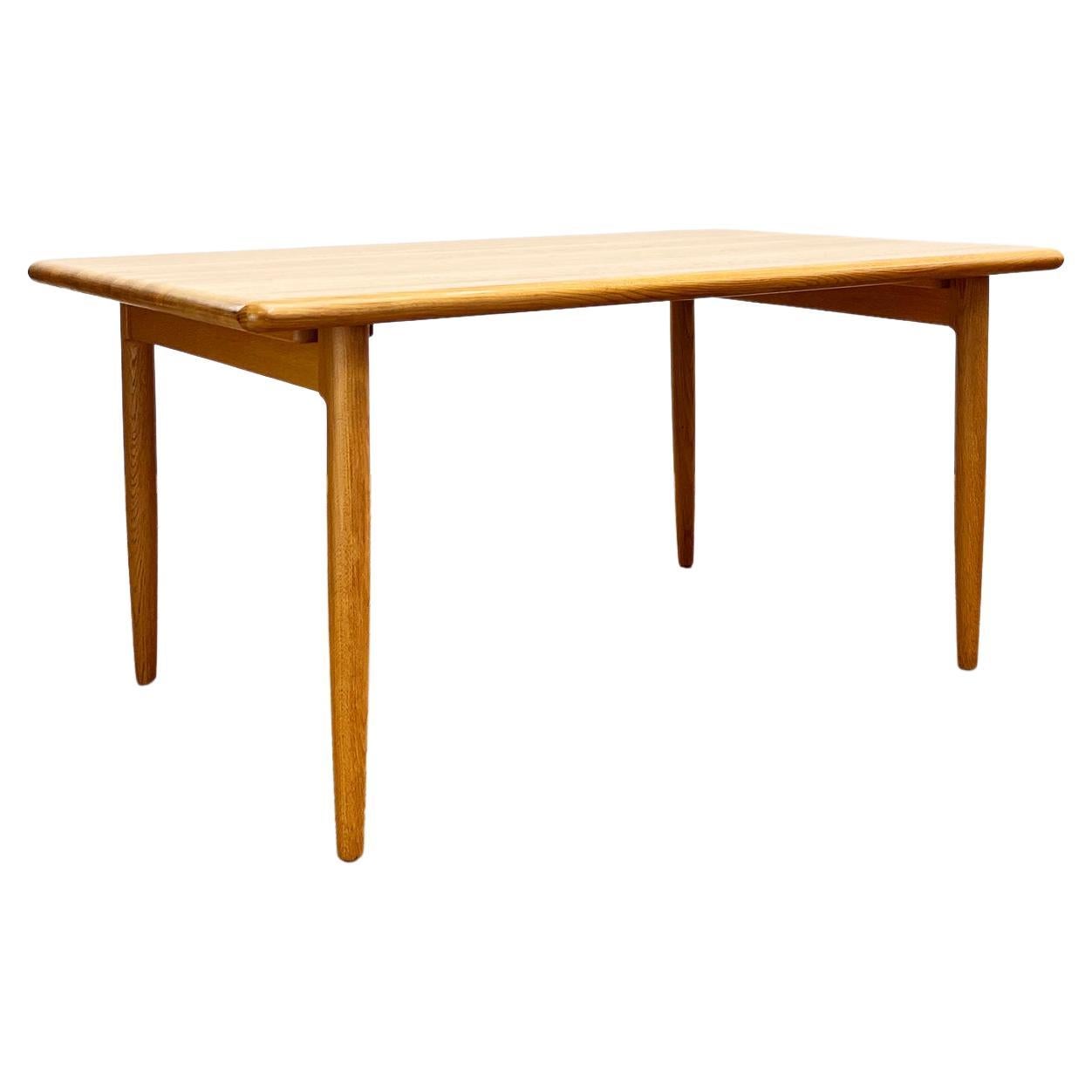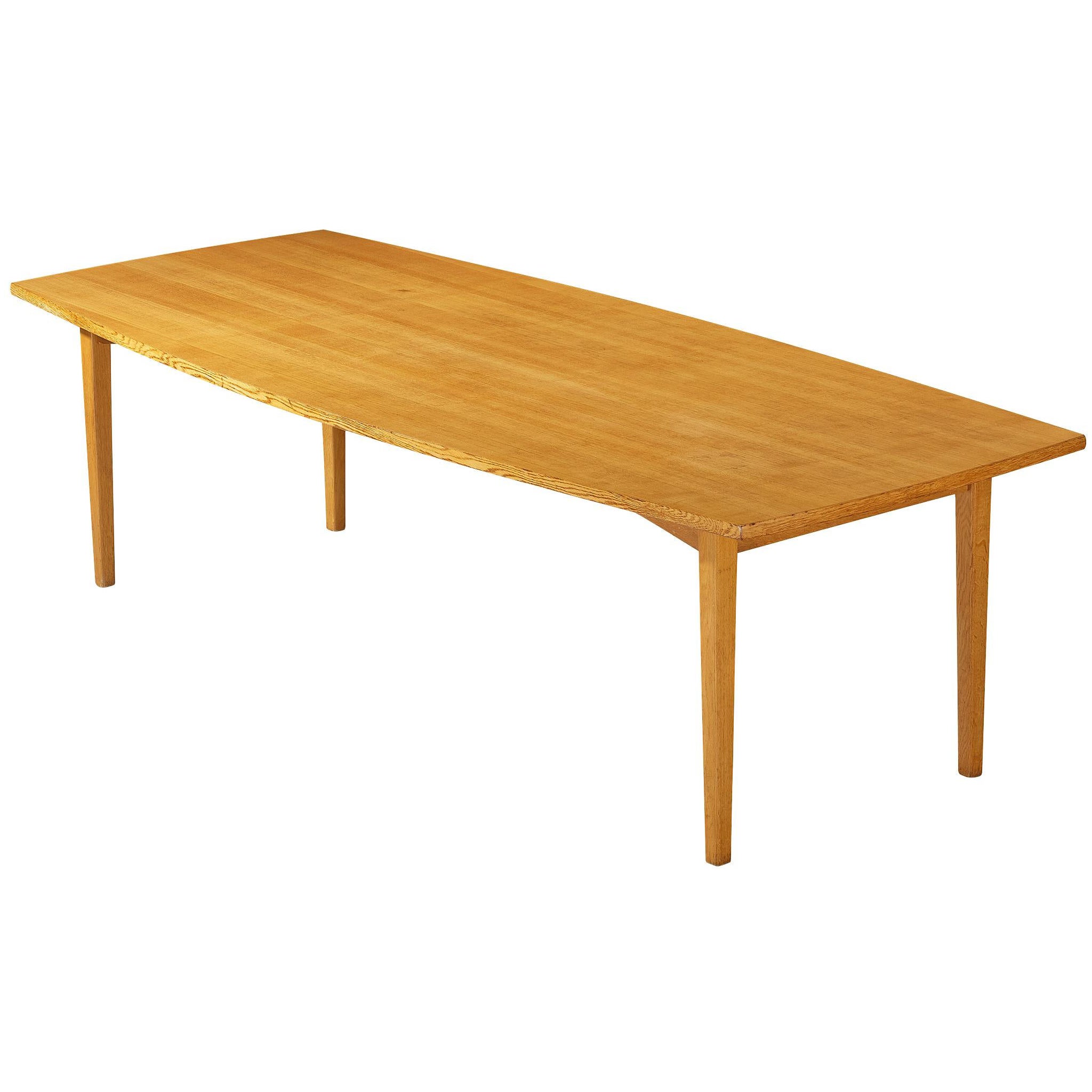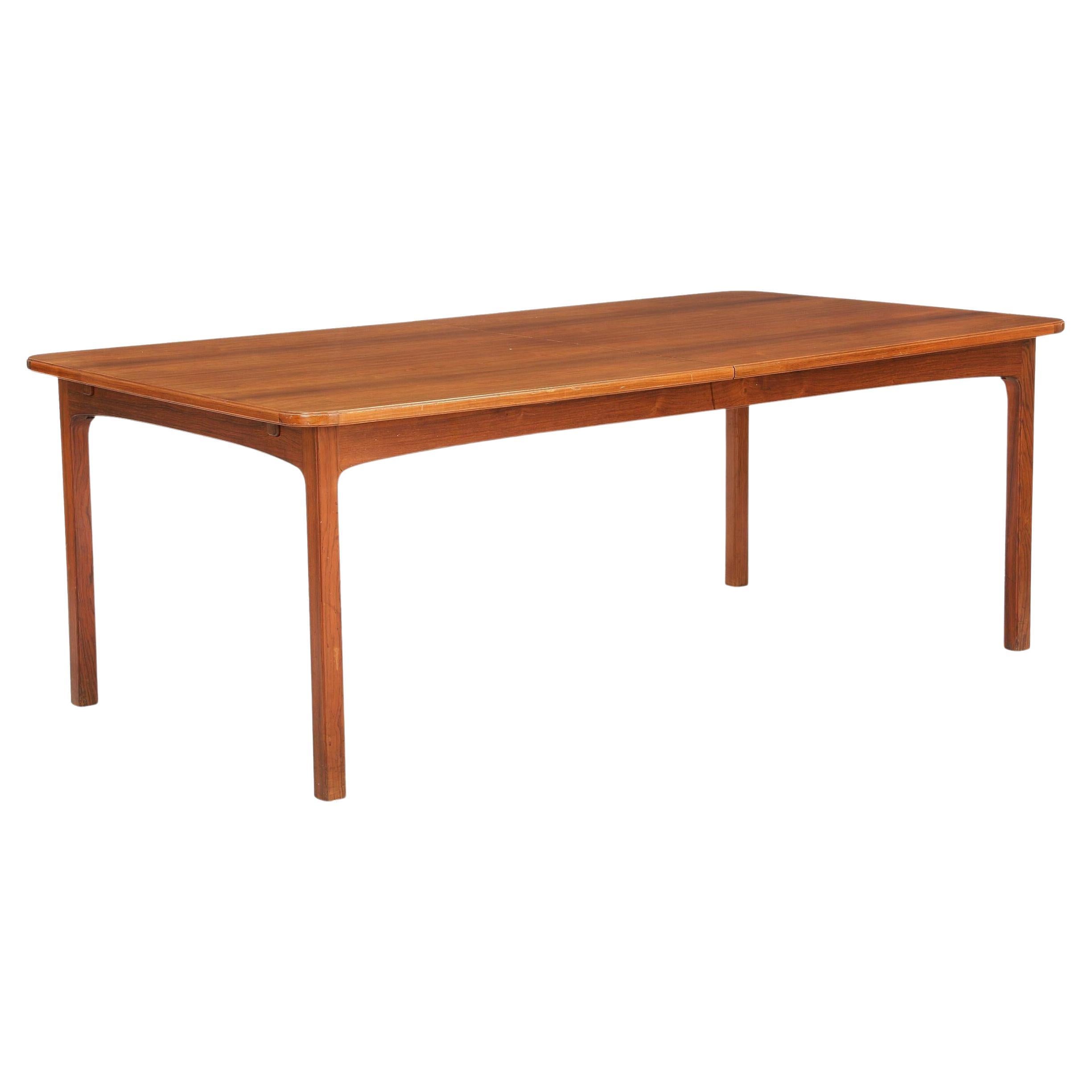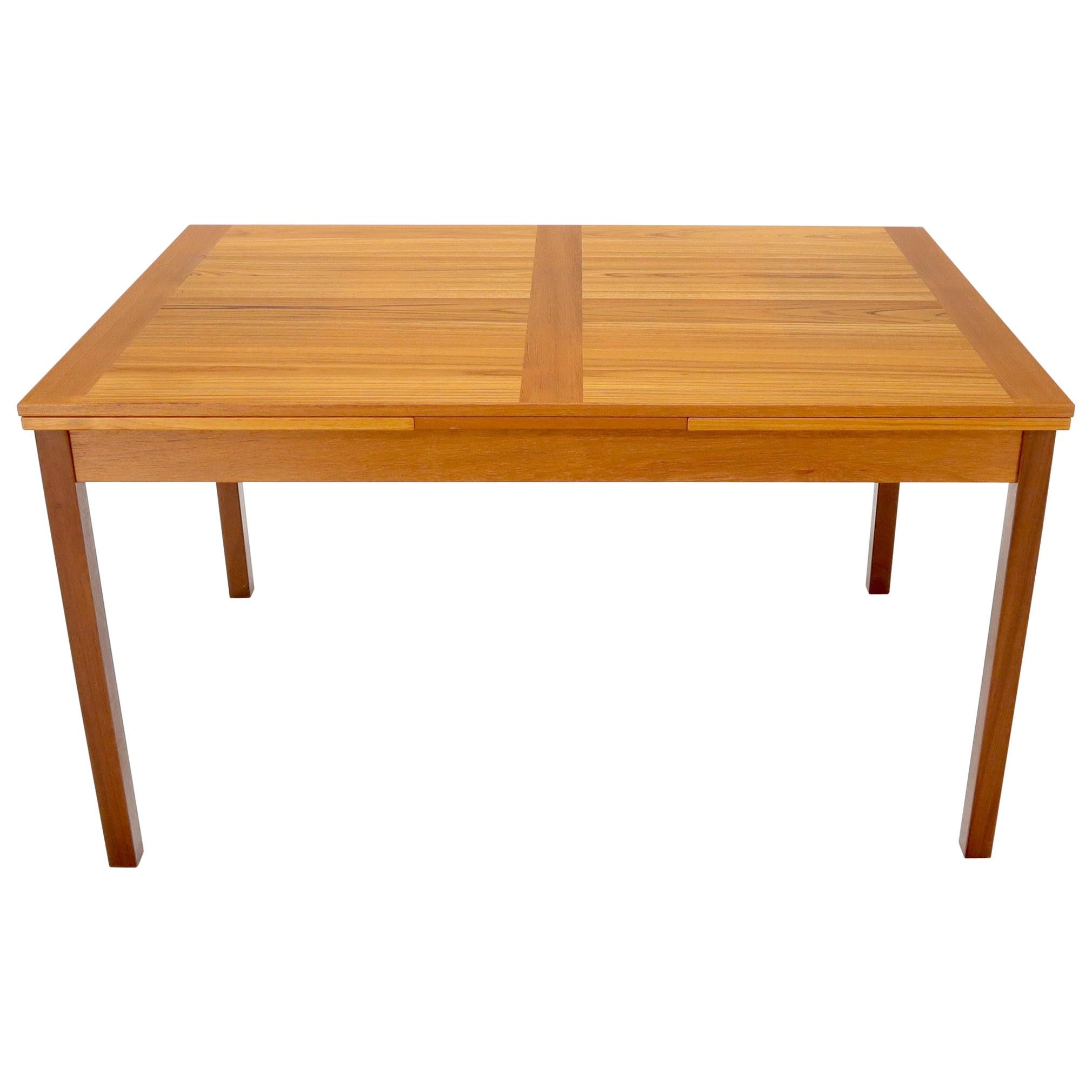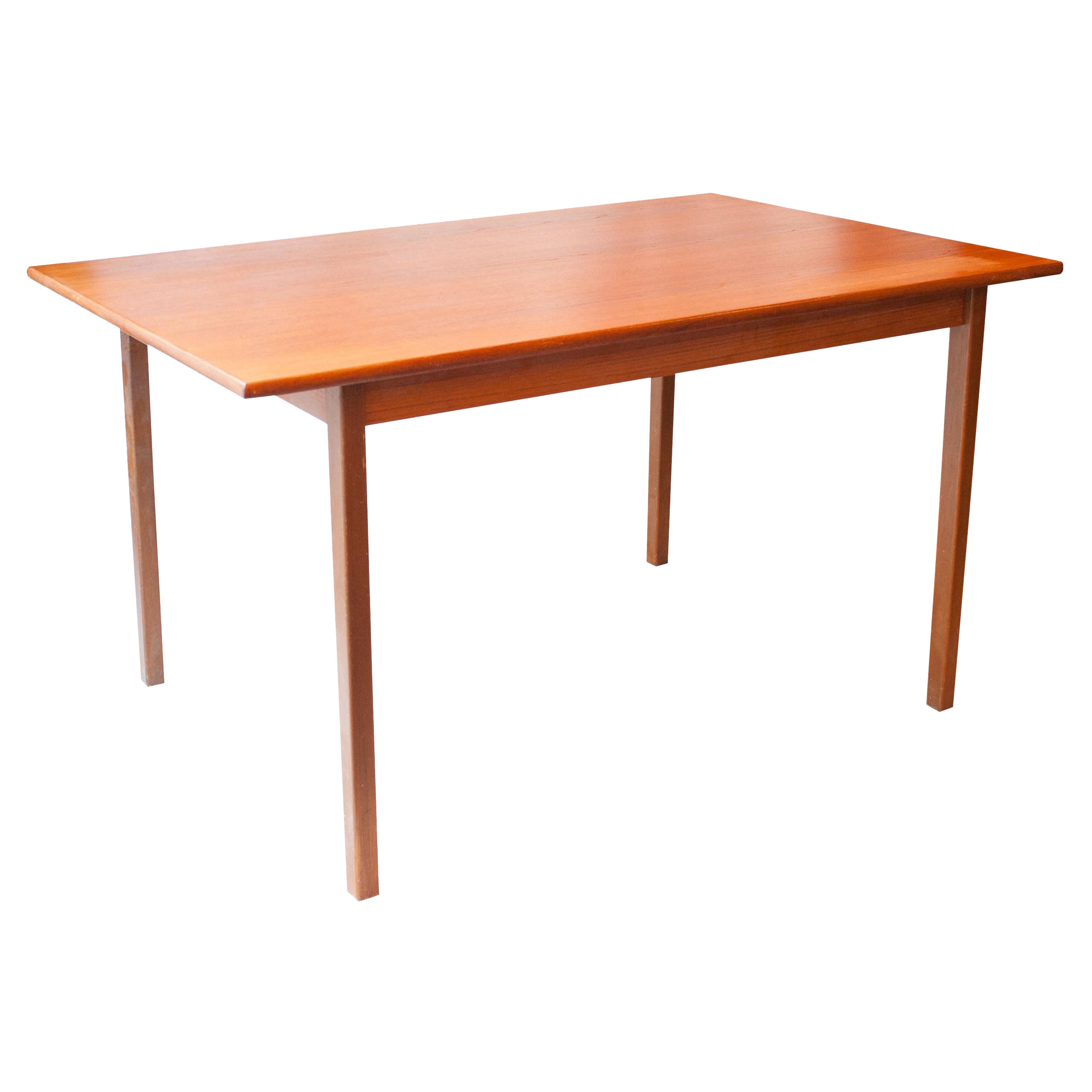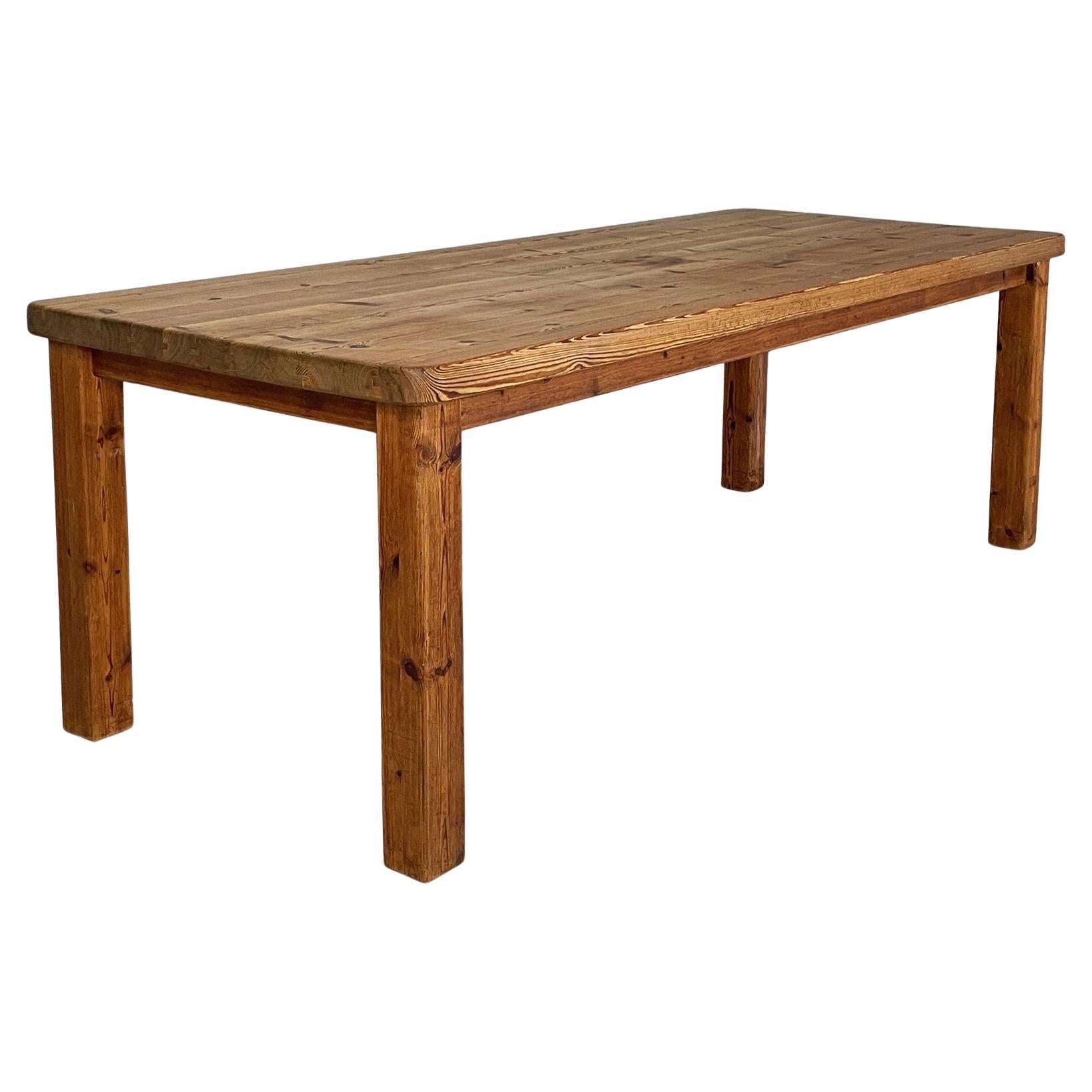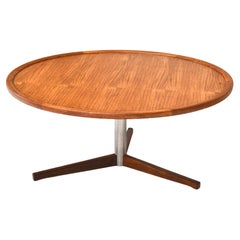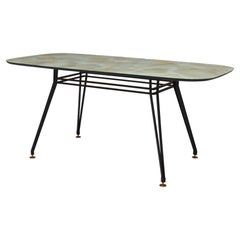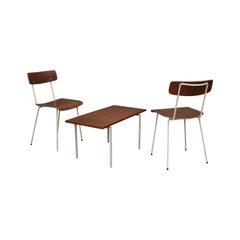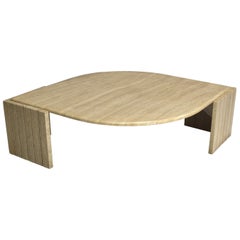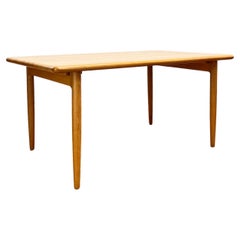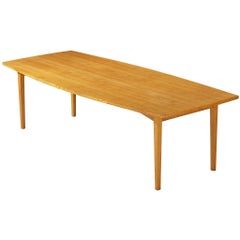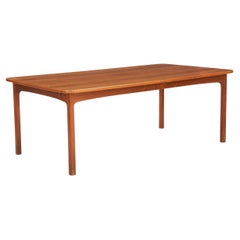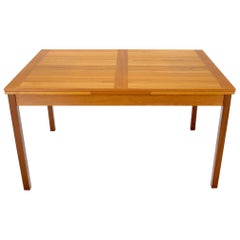Items Similar to Scandinavian drop leaf dining table in solid Oak, Scandinavia - circa 1970-80
Want more images or videos?
Request additional images or videos from the seller
1 of 17
Scandinavian drop leaf dining table in solid Oak, Scandinavia - circa 1970-80
$1,058.07
£806.25
€895
CA$1,482.14
A$1,613.70
CHF 844.91
MX$19,369.81
NOK 10,663.32
SEK 9,998.68
DKK 6,817.21
About the Item
Scandinavian fold down table in the ,manor of Borge Mogensen in solid Oak.
Designer: Unknown. In the style of Borge Mogensen
Manufacturer: Unknown
Country: Scandinavia
Model: Fold down dining table
Design period: circa 1970-80
Date of manufacturing: circa 1970-80
Size WxDxH: 90×90(141 /192) x 70.5
Material: solid Oak
Condition: Good / some signs of age and use
- Dimensions:Height: 27.76 in (70.5 cm)Width: 35.44 in (90 cm)Depth: 35.44 in (90 cm)
- Style:Scandinavian Modern (Of the Period)
- Materials and Techniques:
- Place of Origin:
- Period:
- Date of Manufacture:1970-80
- Condition:Wear consistent with age and use.
- Seller Location:Pijnacker, NL
- Reference Number:1stDibs: LU1712240565152
About the Seller
5.0
Gold Seller
Premium sellers maintaining a 4.3+ rating and 24-hour response times
Established in 2012
1stDibs seller since 2015
264 sales on 1stDibs
Typical response time: 1 hour
- ShippingRetrieving quote...Shipping from: Pijnacker, Netherlands
- Return Policy
More From This Seller
View AllMartin Visser for Spectrum round coffee table in Teak, Netherlands - 1965
By 't Spectrum, Martin Visser
Located in Pijnacker, Zuid-Holland
Round coffee table in Teak designed by Martin Visser for 't Spectrum, Netherlands - 1965.
Designer: Martin Visser
Manufacturer: Spectrum
Model: Coffee table
Design period: 1965
Date ...
Category
Vintage 1960s Dutch Mid-Century Modern Coffee and Cocktail Tables
Materials
Metal
1950's Italian Dining Table with Metal Base, Glass Top and Brass Details
By Ignazio Gardella, Ico Parisi
Located in Pijnacker, Zuid-Holland
Italian dining table from the 1950’s.
The table has a black lacquered metal base with in height adjustable brass feet. The table top has a wood edge with a glass top and a stone prin...
Category
Vintage 1950s Italian Mid-Century Modern Dining Room Tables
Materials
Metal, Brass
AUPING Bedroom Chairs and Table in Teak - Netherlands, 1950's
Located in Pijnacker, Zuid-Holland
Nice bedroom chairs and table in teak and metal by the Dutch company AUPING.
The set is in good condition with some normal signs of age and use.
Category
Vintage 1950s Dutch Mid-Century Modern Chairs
Materials
Metal
Roche Bobois Coffee Table in Travertine, France, circa 1970
By Roche Bobois
Located in Pijnacker, Zuid-Holland
Teardrop shaped travertine coffee table by Roche Bobois, France, circa 1970.
Designer: Unknown
Manufacturer: Roche Bobois
Country: France
Model: Coffee table
Material:...
Category
Vintage 1970s French Mid-Century Modern Coffee and Cocktail Tables
Materials
Travertine
Osvaldo Borsani T69 Round Dining Table by Tecno, Italy, circa 1960
By Osvaldo Borsani, Tecno
Located in Pijnacker, Zuid-Holland
Iconic T69 dining table by Osvaldo Borsani for TECNO, Italy – circa 1960.
Designer: Osvaldo Borsani
Country: Italy
Model: T69 dining table
Design period: circa 1960
Date of manu...
Category
Vintage 1960s Italian Mid-Century Modern Dining Room Tables
Materials
Metal, Brass
Early Michael Thonet Bistro Dining Table in Bentwood and Cane - Austria
By Michael Thonet, Thonet
Located in Pijnacker, Zuid-Holland
Bistro dining table in bentwood and cane designed by Michael Thonet. Originally designed in the 1860s and produced by Thonet in the 20th century by multiple factories.
Size:
chairs: 57x49x96.5 seat height 46 Arm height 67 centimeter
table: ø85.5 height 75 centimeter
Condition: used. The lacquer has worn out on some places. The stained beech wood has discoloration. Cane in the table top is good.
The cane in two seats is damaged. The cane in one back is damaged. One arm has a crack in a curve. Some small wood details are missing. The cane can be repaired or replaced professionally on request.
Michael Thonet
The development of bentwood for use in furniture is one of history’s most significant innovations in design. A range of renowned mid-century modern designers such as Alvar Aalto, Arne Jacobsen, and Charles and Ray Eames drew heavily on this technological advancement, and the success of their enduring works owes to the efforts of pioneering German-Austrian industrialist and designer Michael Thonet — founder of Thonet and widely considered the father of bentwood furniture.
Bentwood furniture dates as far back as the Middle Ages, but it is the 19th-century cabinetmaker and master of parquetry Michael Thonet who is most often associated with this now-classic technique. Thonet in 1856 patented a method for bending solid wood through the use of steam, and from there, the bentwood look skyrocketed to furniture fame. He experimented with bending birch rods into rounded shapes — forming delicately seductive, curving Art Nouveau creations that were a daring departure from the heavy, hand-carved designs attributed to his contemporaries.
The Boppard-born Thonet honed his carpentry skills in his father’s workshop, where he carried out experiments with plywood and modified the Biedermeier chairs that populated the studio. He received an invitation from Austrian Chancellor Prince Metternich to contribute Neo-Rococo interiors to the Liechtenstein City Palace in Vienna. From there, the cabinetmaker gained international recognition, including at London’s Great Exhibition of 1851, which featured works created by members of the Arts and Crafts movement as well as industrial products. Thonet showed a range of furniture at the fair and won the bronze medal for his bentwood chairs. He incorporated his family’s company, the Thonet Brothers — or Gebrüder Thonet — with his sons in 1853.
Considered the world’s oldest mass-produced chair, Michael Thonet’s ubiquitous Chair No. 14 demonstrated that his patented bentwood technology made it possible to efficiently produce furniture on an industrial scale.
Often called the Coffee House chair — the company’s first substantial order was for a Viennese coffeehouse — the No. 14 remains an icon. Thonet originally designed the chair in 1859, and it is considered the starting point for modern furniture. Composed of just six parts, the chair, with its simple, lightweight design, belies its durability. The No. 14 was followed by the No. 18, or the Bistro chair, in 1867, and the 209, or the Architect’s chair, of which Le Corbusier was a fan. (The influential Swiss-French architect and designer used Thonet furniture in his Pavillon de l’Esprit Nouveau at the 1925 International Exposition of Decorative Arts in Paris.)
The business began mass-producing furniture. By the end of the 1850s, there were additional Thonet workshops in Eastern Europe and hundreds of employees. Michael Thonet’s reputation attracted the attention of notable architects including Otto Wagner, Marcel Breuer and Ludwig Mies van der Rohe.
Thonet’s patented bentwood technology also yielded an improvement to rocking chairs for his company — in the middle of the 19th century, Michael produced a series of rockers in which the different curved parts were integrated into fluid, sinuous wholes. Thanks to Thonet, the humble rocker acquired something unexpected: style. And bentwood furniture was embraced by a series of design greats — the innovation can be found in the seating that Josef Hoffman designed for Thonet, in the elegant Superleggera chair created by Gio Ponti and Alvar Aalto’s expressive Paimio armchair...
Category
Antique 1860s Austrian Rococo Revival Dining Room Tables
Materials
Cane, Bentwood
You May Also Like
Mid-Century Dining Table, Danish Design out of massiv Oak Wood, Denmark, 1960s
Located in München, Bavaria
Dimensions 150 x 90 x 72 cm (length x width x height)
Elegant and minimalist dining table manufactured in Denmark. The table is made out of massive oak wood and combines Scandinavia...
Category
Vintage 1960s Danish Mid-Century Modern Dining Room Tables
Materials
Oak
1960s Danish Extendable Dining Table in Oak
Located in Waalwijk, NL
Extendable dining table or conference table, oak, Denmark, 1960s
A sizeable dining table or conference table executed in oak. On one side, a leave can be attached to the frame whic...
Category
Vintage 1960s Danish Scandinavian Modern Dining Room Tables
Materials
Oak
Danish Cabinetmaker Dining Table - Extendable to 325cm for 12 seats
Located in London, GB
This bespoke dining table was made in the 1950s by a cabinetmaker in Denmark. The modern but classical detailing is reminscent of Ole Wanscher and Kaare Klint. The profiled edges of the table top are in keeping with Kaare Klint's English influences. The curve between the table aprons and legs is more similar to Ole Wanscher's modern interpretation of classical furniture design. The edges of table top are also curved from end to end, softening the oblong shape.
Measuring 75cm high, the table is 3cm higher than most midcentury tables and therefore is more in keeping with today's dining chairs with seat heights of 46-47cm.
The table is 205cm long when not extended and extends to 265cm and 325cm with one and two leaves, allowing for 8/10/12 seats...
Category
Vintage 1950s Danish Scandinavian Modern Dining Room Tables
Materials
Hardwood
$16,866 Sale Price
25% Off
Danish Mid-Century Modern Teak Refectory Dining Table Leaves
By Ansager Møbler 1
Located in Rockaway, NJ
Classic Danish Mid-Century Modern rectangular refectory dining table. Made in Denmark. Measures: 2 x 20".
Category
20th Century Danish Mid-Century Modern Dining Room Tables
Materials
Teak
Mid-Century Modern Rectangular Teak Wood Swedish Dining Table, 1960
Located in Madrid, ES
Rectangular Swedish dining table made of teak wood.
Category
Vintage 1960s Swedish Mid-Century Modern Dining Room Tables
Materials
Teak
Danish mid-century modern dining table in wood, 1960s
Located in MIlano, IT
Danish mid-century modern dining table in wood, 1960s
Dining table with rectangular top with rounded corners, entirely in wood. The top rests on a wooden structure. Square section le...
Category
Vintage 1960s Danish Mid-Century Modern Dining Room Tables
Materials
Wood
More Ways To Browse
Kitchen Table With Drawers
Antique Drop Leaf Mahogany Pedestal Dining Table
Colonial Drop Leaf Table
Large Drop Leaf Table
Twisted Leg Drop Leaf Table
18Th Century Gateleg Table
18th Century Gateleg Table
Antique English Oak Gate Leg Table
Antique Spider Leg Table
Barley Twist Drop Leaf Table
Colonial Kitchen Table
Queen Anne Drop Leaf Table
Walnut Sutherland Table
19th Century Gateleg Table
Baker Drop Leaf
Drop Leaf Kitchen Table And Chairs
Queen Anne Drop Leaf Dining Table
6 Leg Drop Leaf Table
